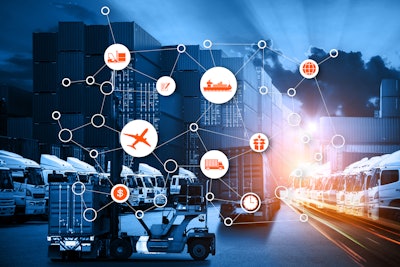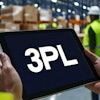
The just-released 2018 22nd Annual Third-Party Logistics Study shows the continuation of positive relationships between shippers and third-party logistics (3PL) providers. Greater availability of data and the ability to make real-time decisions are driving both parties toward better results from more meaningful collaboration and information sharing. The ability to provide and manage IT capabilities is clearly recognized as a key competency of capable providers of 3PL services.
In addition to the annual global survey of 3PL users and providers, this year’s study included an industry workshop that was held at Google’s PartnerPlex conference facility in Mountain View, California. This venue helped to facilitate a very effective dialogue with industry executives that related to preliminary study findings and relevant topics relating to shipper-3PL relationships. Study team sponsor organizations included Penn State University, Infosys, Penske and Korn Ferry. Complimentary copies of this year’s study are available for download at www.3plstudy.com.
Technology Report Card—Shippers Weigh In
Again this year, the most frequently-cited technologies are those that are more execution- and transaction-based capabilities. Examples include warehouse/distribution center management, transportation management (planning and scheduling), visibility and electronic data interchange. Other commonly-cited technologies include web portals, bar coding, network modeling and optimization, supply chain planning, transportation sourcing and global trade management tools. Among the types of IT-based capabilities that generated discussion at the Google workshop as candidates for future growth are yard management, advanced analytics and data mining tools, cloud-based systems and distributed order management.
For the past 16 years, this study has tracked two relevant analytics that provide insight into the role of IT in shipper-3PL relationships. The first of these, the percentage of shippers indicating that IT capabilities are a necessary element of 3PL expertise, has remained at a very high level over the 16 years we have been asking this question (91 percent in the current study). The second, the percentage of shippers indicating satisfaction with 3PL IT capabilities, has increased very significantly to 56 percent in the current study from 27 percent in 2002. The difference between these two analytics has been referred to as the “IT Gap.”
An interesting observation from this year’s study is that the reported 56 percent of shippers indicating satisfaction with 3PL IT capabilities represents a decline from the 65 percent reported last year. This could be because shipper expectations have increased as technology has improved or because shippers are seeking enhanced analytical capabilities to help drive more effective supply chain decisions. These thoughts were suggested by key supply chain leaders who attended our 2017 study workshop to discuss the study and share their insights. Basic reporting of data has become table stakes, and the abilities of both shippers and 3PLs to meaningfully analyze relevant data have increased significantly.
Planning Versus Execution
Increased visibility within the supply chain is creating more opportunities for 3PLs to provide greater value, and providers are becoming better prepared to deal with uncertainties that may arise and problems before they occur. Both parties increasingly need to have the resources that will enhance their abilities to take action in real time to anticipate and lessen or mitigate the consequences of supply chain disruptions. In short, real-time problems require real-time solutions.
In this year’s study, 98 percent of shippers and 99 percent of 3PLs agreed that there is an increased need for 3PLs to respond to customers more quickly and with complete, accurate and consistent information. However, both parties agree there is a need for improvement, with just over half of shippers—51 percent—and half of 3PLs reporting that 3PLs communicate well in responding to risks and executing operating objectives.
Discussions at the workshop session held at Google highlighted the need for accurate and capable systems and technologies and for objective decisions based on data. The capabilities of KPI tracking systems represent a useful resource for shippers to document specific requirements that may result in their requirements being met by 3PLs. Examples of these requirements include shipment tracking/delivery dates, order processing updates and real-time fulfillment information prior to shipping, and assistance with customer inquiries and insightful responses to help mitigate issues.
While there are numerous types of important interfaces that connect shippers and 3PLs, those of greatest immediate consequence occur in the execution phase of the relationship. One of these interfaces is that of direct communications between shippers and 3PLs, which participants at the Google workshop said can sometimes be lacking. This year’s research identified a number of root causes of communications issues with 3PLs and their customers:
- Over-use of email for communications, instead of more contemporary technology that can enable more complete, accurate and consistent communications
- Lack of context in emails or phone calls that does not satisfactorily communicate urgency and details that may surround a real-time problem
- Lack of a collaboration hub or digital workspace
- Unclear or changing internal organizational structure
- Geographically-dispersed teams.
Blockchain
The increased desire for visibility within the supply is driving increased interest in blockchain technology, which breaks each movement down into a block and documents transactions every time a shipment changes hands. Linking the blocks together creates a record for parties involved in the process and provides specific details associated with each movement, which all parties can access.
This creates a permanent, digital history as products move throughout the supply chain from the original source through the final leg of the journey. The goal is to create one version of the truth, link information, create transparency surrounding all parties involved in the supply chain, and identify how they participated in the flow of a good or service. As a bonus, the digital history is not owned or controlled by any one trading partner, so it can be available for all verified partners to use.
The technology improves security because each transaction is validated and recorded by an independent third party. No one party can modify, delete or append any record without the consensus from others on the network. Data generated through blockchain technology could provide more opportunity to analyze information, which is becoming more important in today’s data-driven supply chain. Blockchain also has the potential to create demand chains because it closely tracks and transmits data in real time related to consumption.
Blockchain isn’t a panacea solution that is a fit for all supply chains. And how companies can and will apply blockchain should be directly dependent on the return on investment. Certain industries, such as fair-trade minerals, food, prescription drugs, fine arts and diamonds, may find greater value in blockchain capabilities. The technology can help remove the risk of counterfeit goods because shippers can easily track every person that has touched the products. In the future, consumers may make choices based on what information is available about a product.
The interest in opportunities to apply blockchain technology to the supply chain is gaining traction. IBM and Maersk announced that they are collaborating to use blockchain technology. The companies said the technology would help them manage and track the paper trail of tens of millions of shipping containers across the world by digitizing the supply chain process from end to end to enhance transparency and the highly secure sharing of information among trading partners.
Overall, the study found that both 3PLs and shippers are in the beginning states of examining or implementing blockchain technology. However, interest is increasing, particularly for logistics providers, and its use could create a competitive advantage. To be successful, shippers will need greater clarity relating to the functioning, benefits, and likely costs that may be related to the use of blockchain.
Automation and Digitalization
Technology is developing at a rapid pace, and shippers and logistics providers are leveraging advanced technologies to enable faster and more efficient services, provide visibility and improve safety. Automation is changing everything from the vehicles that move products to warehouse operations, while also assisting human workers throughout the supply chain.
Shippers participating in the workshop agreed they are interested in the concept of using data to predict and reduce vehicle-related service failures. The more information that can be available about vehicle performance and how drivers are behaving can be instrumental in driving down costs.
This year’s study addressed some aspects of the development and use of autonomous vehicles. Currently, 2.5 percent of shippers and less than 2 percent of 3PLs report use of autonomous vehicles, but 27 percent of shippers and 3PLs report they plan to make a future investment in the technology.
While technology could ultimately replace some of the capabilities related to the use of drivers, it is likely that drivers will remain a critical link in the supply chain for quite some time. Drivers play a crucial role in interacting with customers on both pick-ups and deliveries. Plus, for safety reasons, the public may insist that automated vehicles have a driver present to take over in any unexpected or difficult situations. However, fully autonomous vehicles are not yet a reality for 3PL providers, so they have not been adopted and adjusted for the practicalities of everyday use.
Talent
Technology is reframing the demands on the workforce, particularly within the supply chain where automation, digitization and data collection capabilities are growing rapidly. Supply chain leaders and logistics executives are taking on even greater importance as companies work to build more efficient and technologically advanced supply chains.
Although it may seem like increased automation will decrease the need for companies to invest in employees, the opposite appears to be more likely. Technology will help employees recognize greater potential and take care of certain tasks, but it is human talent that is the key factor linking innovation.
Technology is upping the table stakes for participants to be successful, particularly in the logistics and supply chain industries. Supply chain and logistics executives are increasingly shifting from physical efficiency to data efficiency. Data collection, analytics, increased visibility and the ability to react quickly all rely on increased technology within the supply chain. Thus, logistics leaders will have to handle highly complex operations.
Understanding the current and future state of the supply chain industry can help shippers and 3PLs deploy strategic workforce planning that aligns a company’s business and talent strategy and then mapping the workforce’s needs to that strategy.
As documented in the 2018 22nd Annual 3PL Study, the availability and analysis of useful information has become front and center among the capabilities that are essential for customers and 3PLs to effectively manage supply chains. The examples above are intended to provide some perspectives on technologies and approaches that are high-profile and can contribute to and improve our supply chains. As to what may lie ahead … stay tuned.
![Pros To Know 2026 [color]](https://img.sdcexec.com/mindful/acbm/workspaces/default/uploads/2025/08/prostoknow-2026-color.mduFvhpgMk.png?auto=format%2Ccompress&bg=fff&fill-color=fff&fit=fill&h=100&q=70&w=100)






![Pros To Know 2026 [color]](https://img.sdcexec.com/mindful/acbm/workspaces/default/uploads/2025/08/prostoknow-2026-color.mduFvhpgMk.png?ar=16%3A9&auto=format%2Ccompress&bg=fff&fill-color=fff&fit=fill&h=135&q=70&w=240)








